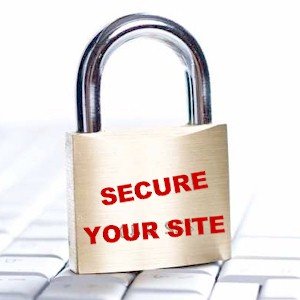 Once things get hectic, that’s when the career cyber criminals will get to work attacking your site. So it’s in your best interest to protect your online concern as well as your customers using it from these ever growing threats.
Once things get hectic, that’s when the career cyber criminals will get to work attacking your site. So it’s in your best interest to protect your online concern as well as your customers using it from these ever growing threats.
So regardless of what your online presence may be, an affiliate site, online brochure, or a full functioning e-commerce Web store, there are a few steps which you can take to lock down your site.
This especially when it comes to e-commerce, and for the sake of your paying customers, focus should be placed at the point of financial transaction, although it should be a priority that online safety be a paramount feature at all times.
Online security begins with you, the business proprietor, by making sure that your aware of the latest tactics and methods used to cyber attack vulnerable websites.
Business owners need to constantly monitor their sites to ensure that their sites haven’t been somehow hijacked or penetrated. One common tactic to look for is someone somehow redirecting your visitors elsewhere to a malicious site.
There’s absolutely no one who wants to lose their reputation or goodwill from an external hijack, which could also lead towards potential liability issues.
Malicious Violators Are Out There
Security experts claim that malicious website attacks are constantly on the rise, especially during peak holiday times such as Black Friday or Christmas. The majority of those violated are legitimate business sites which are somehow compromised.
These attacks can also occur in a variety of methods, such as from the vulnerabilities which exist in the content management system, (CMS) which is the virtual framework of the site.
Others methods include the brute forcing of seemingly secure passwords on the websites FTP server, or somehow displaying popup ads using a third-party ad network.
Recommended Steps To Securing Your Data
Make Sure That You Continuously Monitor Your Network
Security experts recommend that all businesses should be regularly scanning their sites for any malware activity. This includes monitoring the infrastructure for any intrusions, and keeping a close eye on the source of traffic for any malicious activity.
Network administrators should be checking their logs for any attempted connections to known suspicious hosts directly from their own servers, which indicates a script which is attempting to “phone-home” to a remote server with information about your site.
The data logs should be checked on a daily basis to see whether it’s somehow loading malware onto the site visitors personal computers, or whether it’s vulnerable to attacks such as SQL injection.
Make sure that there’s also no unusual or multiple login attempts on your server or CMS, such as WordPress, or intrusions on the host Web server.
There are a lot of variations of malware which compromises sites by being able to modifying certain files, or by somehow injecting a malicious script directly into the site’s directory.
SSL And The Trust Factor
The most important feature that all businesses should be using when protecting their sites, and their visitors, is by using Secure Socket Layer, or (SSL) on all of their webpages.
Once SSL is enabled, all of the information between the user and the site needs to pass through a secure encrypted tunnel, which makes it harder for a malicious 3-party to be able to intercept the data.
For businesses who especially offer online transactions on their sites, it becomes a vital step. At the very least, SSL should be used on all the shopping pages where an online e-commerce exchange is involved.
But rather than just using SSL on the pages which are related to financial data, some recommend that the entire site be SSL protected if you have proprietary or valuable information on your site.
Site Visitors And SSL
For the visitor, the easiest way to tell whether a site is SSL protected is by looking at the URL of the site. If there’s a “https” instead of just http in the browser bar, then the data is SSL protected.
It’s recommended that users completely avoid any e-commerce sites which doesn’t display https, and never enter credit or debit card information if the page isn’t SSL secure.
Recognizable “trust marks” should also be displayed throughout the site, such as a Security Seal, which informs the shoppers that the site can be trusted and is verified, and free from malware.
Businesses can get digital SSL certificates from any of the established and trustworthy certificate authorities. Be aware, however, as there are fraudulent operators who offer fake SSL certificates, usually at a low cost, and there’s no guarantee that they follow all of the security protocols.
It’s Not Always Just Online Threats
It’s important to know that securing your online site usually begins with physical security. All businesses, especially those who have in-house servers, should be protecting themselves from physical theft or intrusion.
If you’ve recently moved, or are planning to move your online business to a cloud host, you need to apply due diligence to ensure that the remote cloud provider allows just authorized personnel to their data centers.
Businesses should also be storing their private SSL keys in secure, cryptographic hardware devices which are tamper proof to protect the digital certificates. These private keys should be firmly secured in their devices so that the cyber-criminals can’t somehow intercept the keys, or somehow trick the site owner or employee to reveal them.
It’s estimated that there’s potentially up to 2 million people who are victims of cyber crime on a daily basis, and most likely a lot more which are unreported. Business owners should be doing everything they can to protect their customers, and themselves.
